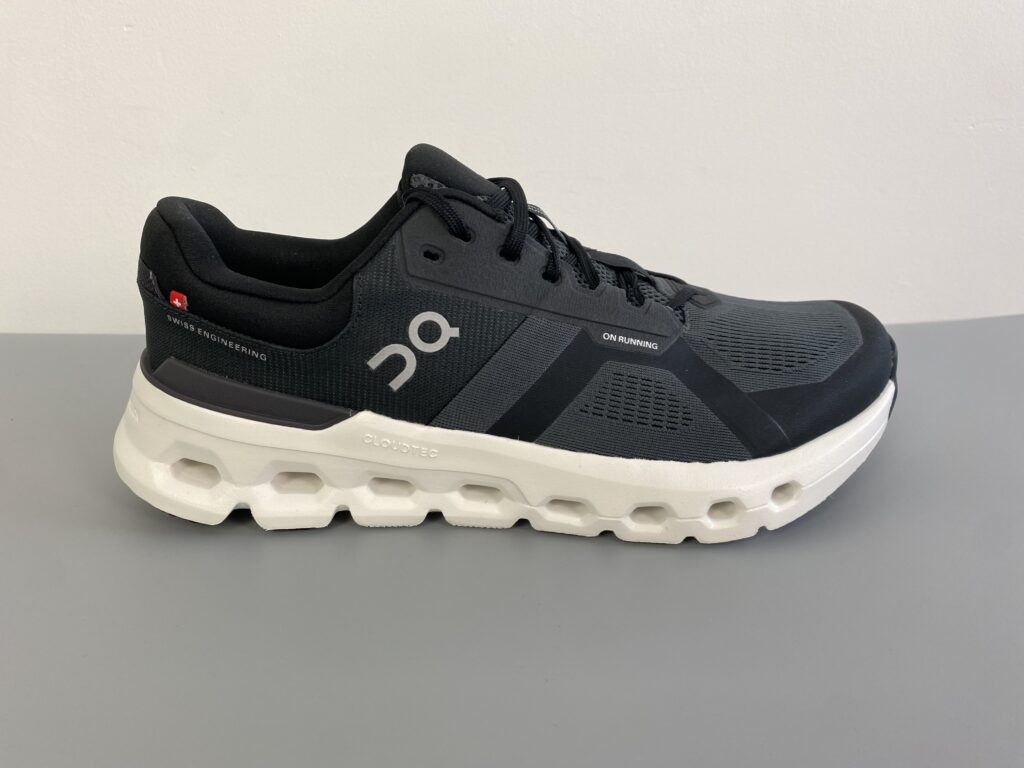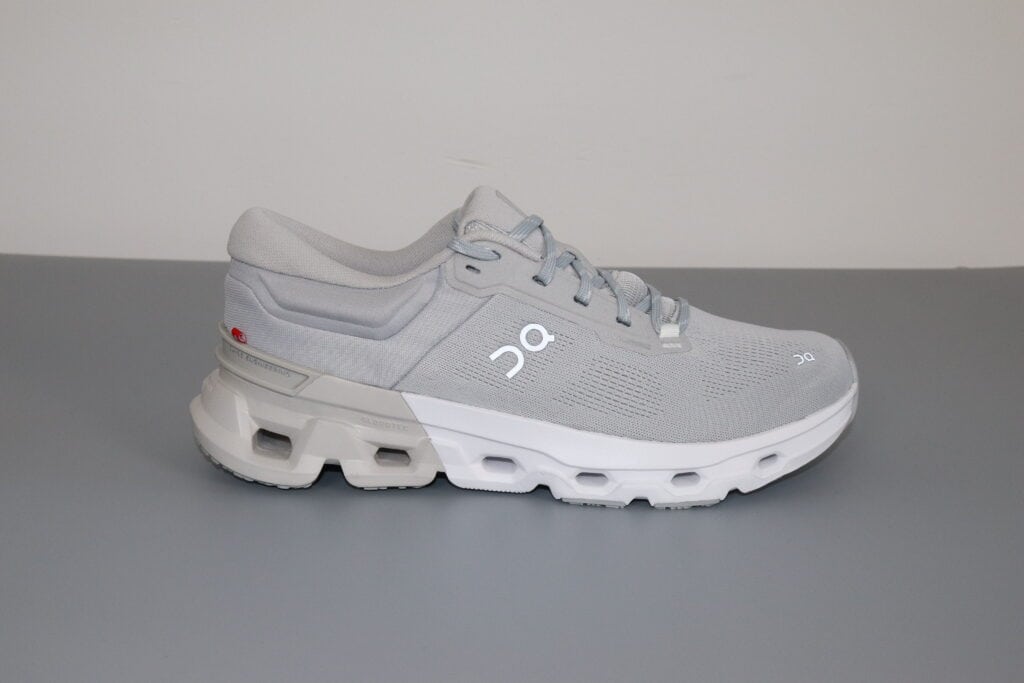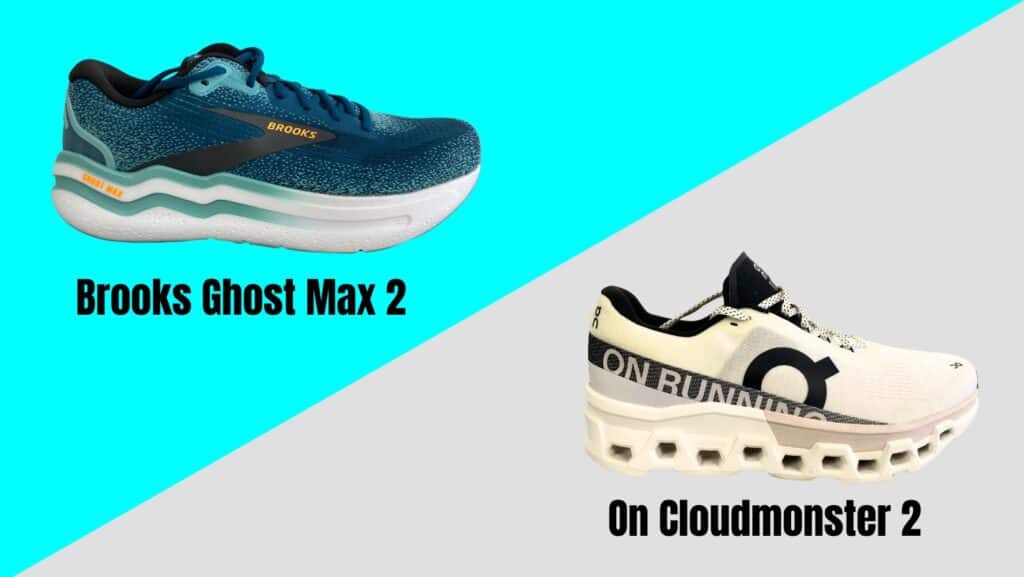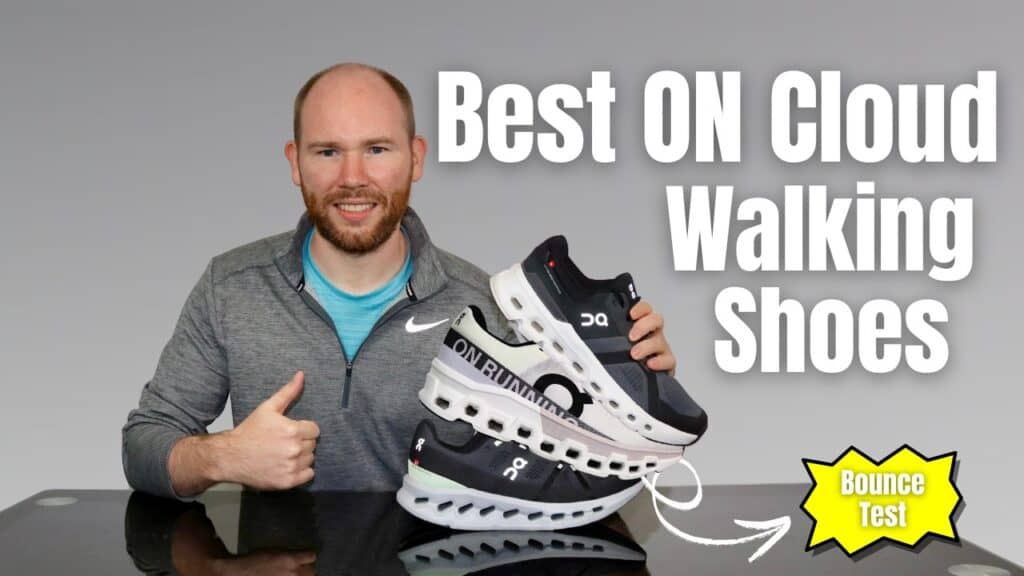Hi, my name is James, and I’m a foot and ankle specialist with over 10 years of experience advising patients on footwear for various conditions. Today, we’re comparing two of ON Cloud’s primary stability shoes: the Cloudrunner 2 and the Cloudflyer 5. These shoes are designed for different functions, and I’ll break down their specifications, medical benefits, and how they feel for activities like walking, standing all day, or running. By the end of this post, you’ll know which shoe might work best for you.
1. Cushioning and Stack Heights
- Cloudrunner 2:
- Rearfoot: 39mm | Forefoot: 29mm
- 10mm heel drop
- This higher drop is particularly beneficial for Achilles tendonitis, as it reduces strain on the Achilles tendon during the gait cycle. Additionally, the extra cushioning in the forefoot offers comfort for conditions like metatarsalgia or Morton’s neuroma by absorbing impact and reducing pressure on the forefoot.
- Cloudflyer 5:
- Rearfoot: 31mm | Forefoot: 21mm
- 10mm heel drop
- While it has the same heel-to-toe drop, the overall reduced cushioning in the forefoot can place additional pressure on the toes, which may irritate forefoot conditions like Morton’s neuroma.
Key Difference: The Cloudrunner 2 offers softer, more forgiving cushioning, while the Cloudflyer 5 feels firmer and more rigid underfoot.
2. Cushioning Technology
Both shoes use ON’s Helion cushioning, but the feel differs:
- Cloudrunner 2:
Provides a smooth, soft, cloud-like experience. It’s designed for comfort, making it ideal for long walks or standing all day. The cushioning is evenly distributed, creating a balanced and stable ride. - Cloudflyer 5:
Features dual-density cushioning: firmer in the heel for added stability and softer in the forefoot. However, the overall ride is rigid and firm, feeling more orthopedic and less adaptable for dynamic movements.
Key Difference: The Cloudrunner 2 is softer and more flexible, while the Cloudflyer 5 prioritizes rigidity and stability.
Check the Best Prices on Amazon Below:

3. Stability Features
Both shoes incorporate ON’s CloudTec pods to provide stability:
- Cloudrunner 2:
The pods are broader on the inner aspect and denser, reducing compression and helping control inward pronation. These features make the shoe suitable for conditions like posterior tibial tendonitis and peroneal tendonitis, as they stabilize the foot during contact and transition phases. - Cloudflyer 5:
The pods are rigid and firm, providing a more structured base. The shoe also features a heel clip for added rearfoot stability, making it feel sturdier but less comfortable for prolonged use.
Both shoes have sole flare (wider soles) for additional ground contact and midfoot support, but the Cloudflyer 5 is noticeably chunkier and feels clunkier during transitions.
Key Difference: The Cloudrunner 2 offers smoother transitions, while the Cloudflyer 5 prioritizes structure and control, feeling more orthopaedic.
4. Fit and Upper Design
- Cloudrunner 2:
- Engineered mesh upper for breathability.
- True-to-size fit, with a slightly snug midfoot and a broad forefoot.
- Padded tongue and moderately stiff heel counter, providing good support without over-restricting movement.
- Cloudflyer 5:
- Similar engineered mesh upper but with a more padded tongue.
- Diagonal aesthetic patterns add a design touch.
- Heel counter is more rigid, offering stronger rearfoot control.
Both shoes are available in normal and wide versions, ensuring they accommodate a range of foot shapes. Neither shoe had sizing issues in our tests.
Key Difference: The Cloudflyer 5 has a slightly firmer heel counter, while the Cloudrunner 2 provides a more comfortable, balanced fit.
Check the Best Prices on Amazon Below:

5. Medical Benefits
Both shoes are designed to provide stability and can help manage various conditions:
- Cloudrunner 2:
- Posterior Tibial Tendonitis: Sidewalls and a supportive heel counter stabilise the foot, reducing stress on the posterior tibial tendon.
- Peroneal Tendonitis: Balanced cushioning and medial support limit excessive lateral movement, potentially reducing strain on the peroneal tendons.
- Achilles Tendinitis: The 10mm drop alleviates tension on the Achilles tendon during walking or running.
- Cloudflyer 5:
- It can offer similar benefits for posterior tibial tendonitis and Achilles tendinitis but lacks the softer forefoot cushioning, which may make it less ideal for those with forefoot conditions like Morton’s neuroma or Metatarsalgia.
6. Use Cases
- Cloudrunner 2:
- Best for walking, standing all day, and light runs.
- A comfortable option for those needing moderate stability without sacrificing cushioning.
- Cloudflyer 5:
- Ideal for individuals requiring firmer stability or dealing with more severe overpronation.
- Suitable for walking and standing but may feel too rigid for dynamic or faster-paced activities.
Check the Best Prices on Amazon Below:
Conclusion: Which ON Cloud Shoe is Right for You?
- Choose the Cloudrunner 2 if you:
- Want softer cushioning for all-day comfort.
- Need moderate stability for conditions like posterior tibial or peroneal tendonitis.
- Prefer a smoother, more flexible shoe for walking or light runs.
- Choose the Cloudflyer 5 if you:
- Require a firmer, more orthopaedic-like shoe for maximum stability.
- Need a rigid platform for severe overpronation.
- Are looking for a shoe similar to the Brooks Ghost Max 2 but prefer a slightly firmer ride.
Both shoes offer excellent stability and fit true to size, with options for wider feet. While the Cloudrunner 2 feels softer and more adaptive, the Cloudflyer 5 is a better choice for those seeking a firmer and more structured experience.
If you are interested in more stability shoes check out our stability shoe review of the year.
If you have any questions about these shoes or their suitability for specific conditions, please comment below. For detailed reviews and links to purchase, check the description. Supporting our channel by liking, sharing, or subscribing helps us continue providing unbiased shoe reviews. Thank you for reading!



